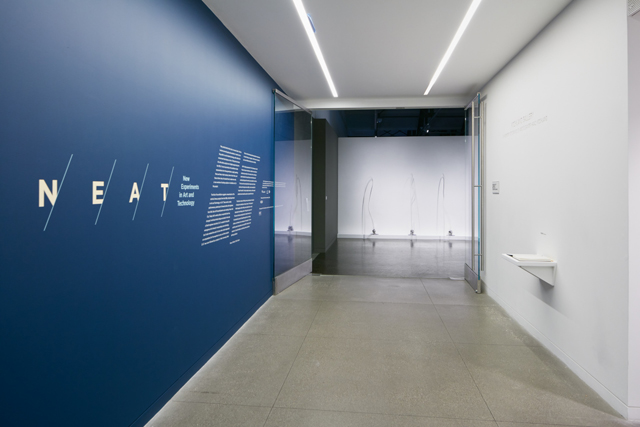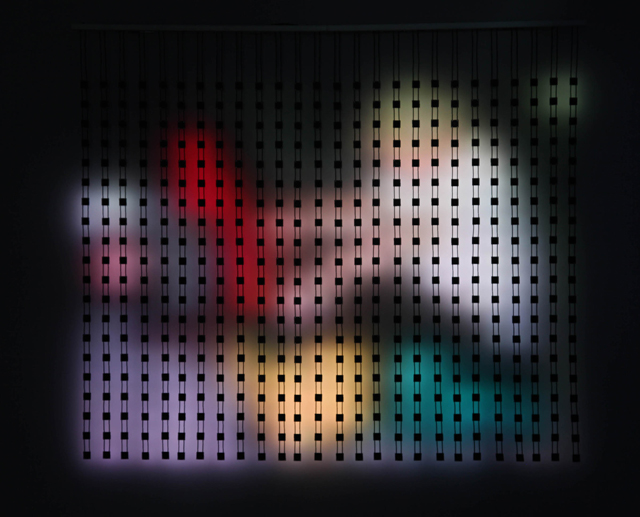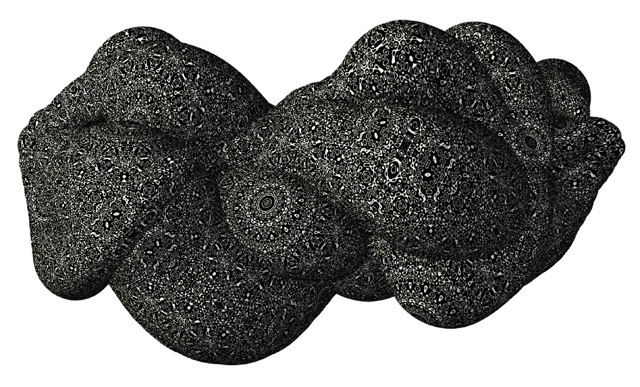New Experiments in Art and Technology (NEAT), the latest exhibit from the Contemporary Jewish Museum’s Chief Curator Renny Pritikin (with help from exhibition artist Paolo Salvagione), brings together three generations of Bay Area artists bridging the tricky and much-maligned gap between high tech and aesthetics.
In 1968, when the original E.A.T. (Experiments in Art and Technology) launched, the project paired artists with engineers. But today, artists are their own engineers. The NEAT material list reads like the contents of a futuristic hardware store: custom software, thermal plastic, 3D printed housings, and LEDs galore.

What do experiments in art and technology look like today? Many are kinetic. Many produce light. Many invite participation. In the CJM’s darkened upstairs galleries, the ambiance is that of a less-rambunctious, more meditative Exploratorium. Balancing visible machinery with mysterious inner-workings, the works in NEAT routinely provoke a sense of wonder, if not outright play.
The very first work to greet visitors is Paolo Salvagione’s Rope Fountain, a group of six gently oscillating ropes circulating through motors mounted at the baseboards. The ropes move in tandem like synchronized swimmers, whirring and slapping at the gallery floor. The temptation to touch them is almost unbearable.
Thankfully, Scott Snibbe’s interactive pieces quickly fulfill that desire. The experiences he provides are both public and private — visitors don headphones to hear music and touch iPads running custom software, others witness graphic renderings of their actions projected large-scale on the gallery walls. The most thrilling of these synesthetic stations is REWORK_ (Glass Machine); with the ease of just a few touches, museumgoers can produce their own Philip Glass-esque tunes.

Nearby, Camille Utterback’s Entangled invites a more full-body interaction with the art. As visitors step into the light of two projected rectangles, their figures translate into fragmented patterns on a two-sided scrim. The work creates a strange vertiginous feeling, eliciting plenty of dreamy arm-waving and disoriented side-stepping as visitors work to decode the movement of color and shape before them.
The mechanics of Jim Campbell’s Broken Movie are laid bare, as an out-of-focus video of a city streetscape plays behind a hanging tapestry of LEDs. Single LEDs scattered across the walls explode the image outward, functioning like movement caught out of the corner of one’s eye. It’s hard but worthy work to watch something so low-resolution, accustomed as we are to the modern arms race of retina screens, 5K displays and ultra- ultra- ultra-HD.

Two pieces abandon hard edges for more organic mergers of art and technology. Gabriel Dunne and Vishal K. Dar’s NAAG XY projects a mesmerizing snake-like pattern over a curved form high on a gallery wall, while Mary Franck’s Gilded and Unreal looks like something out of David Cronenberg’s 1999 film eXistenZ, an oozing wall of lights behind vacuum-formed thermal plastic.
Playfulness returns near the end of the exhibition, with four sculptures by Alan Rath (two flirtatiously kinetic) and Paul DeMarinis’ room full of noisy little contraptions. Amidst the rattling, I realized the whole show hummed with activity from start to finish.
NEAT makes a persuasive argument against the perceived gulf between the worlds of technological discovery and artistic achievement. Many of the artists included have labored within the realm of “new technologies” for decades. In a — fittingly — digital catalog video, Utterback says, “Sometimes what happens with artists using technology is that because we’re maybe less formally trained, we don’t know what we’re not supposed to do.”
In other words: if it’s wrong to investigate materials, reinvent uses and find new ways to engage audiences, then to hell with being right.
New Experiments in Art and Technology is on view at the Contemporary Jewish Museum through Jan. 16, 2016. For more information, visit thecjm.org.